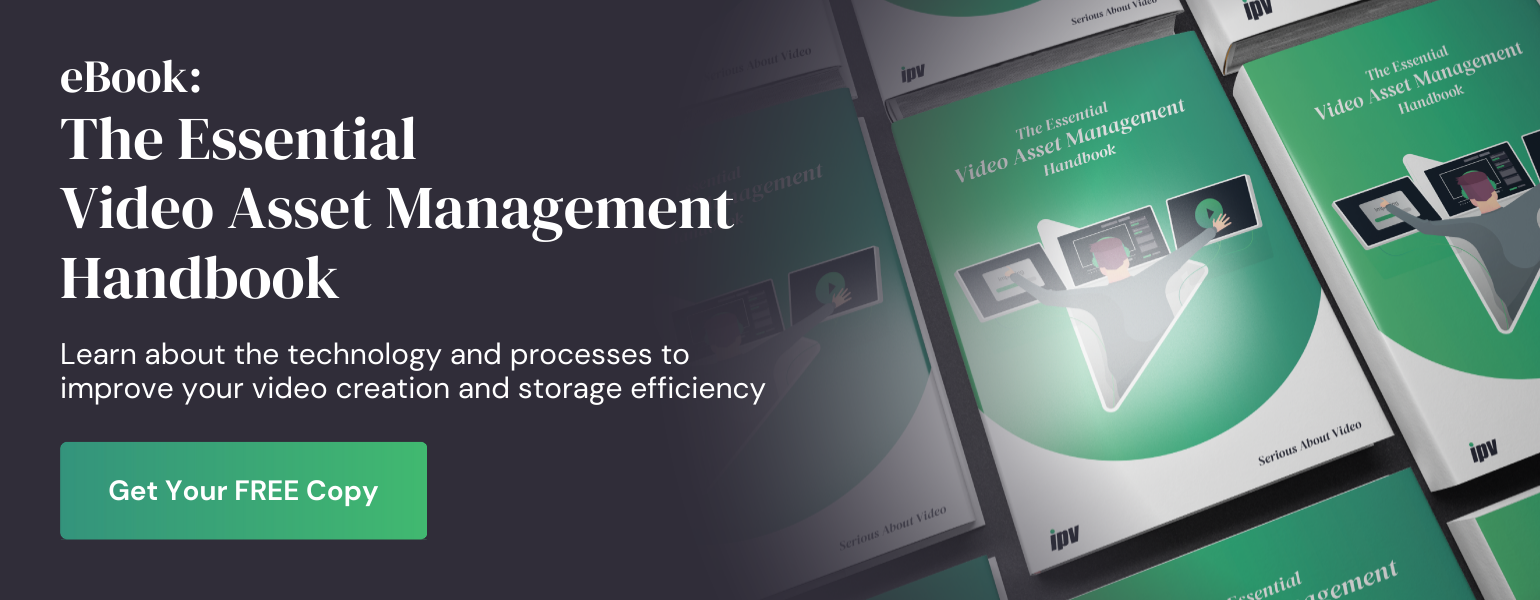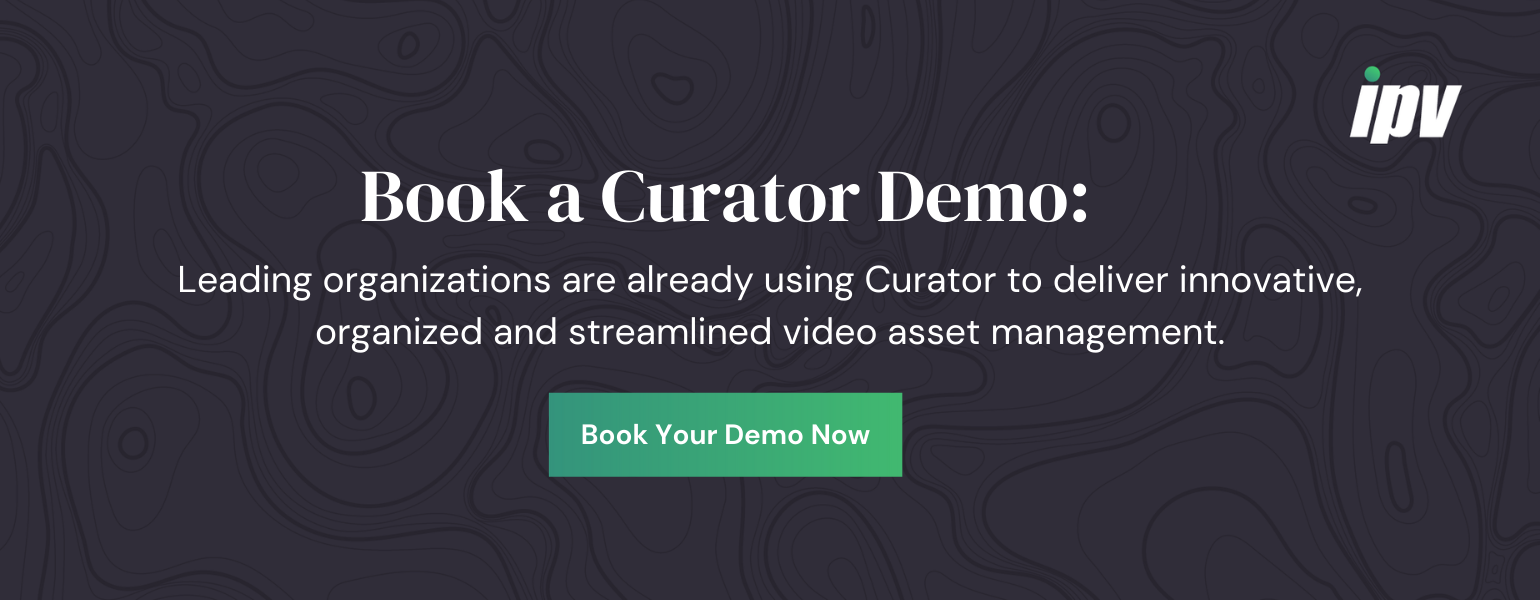%20(1).jpg)
Video production is time consuming. 64% of marketers see video as the hardest content to create. But 82% of all online traffic is predicted to be video content by 2022. OTT platforms provide near infinite access to large waiting audiences expecting everything from explainer pieces to entertainment — delivered with the click of a button.
For creatives and corporations alike, video unites sound design, visuals and narrative in a single persuasive package. Video is the way to tell stories. The ease with which video content is consumed is only a bonus. Video is the future, so you need to be ready.
A huge part of matching demand for video is optimising your video production workflow. Here, we’re going to explain some simple tricks and cutting-edge solutions that will let you 10x your video production workflow and keep up with the demands of the future.
1. Be organized
Organization is always key in business, and video production is no exception. Creative professionals spend an astounding 1 out of every 10 working hours looking for poorly organized files. As such, failure to address this could see your production teams wasting copious amounts of time searching through raw footage and poorly structured archives.
Luckily, you can make sure that doesn’t happen by focusing on a more organized workflow in pre-production, your available video repository, and your archive. Thinking about where you store your video files is vital for ensuring easy access. File naming conventions (FNCs) can also matter a great deal, with everything from your video files themselves to your media drive and archive materials.
Naming conventions do, of course, vary between companies, though options like the date of footage or the project name can all work well. Some questions to ask before implementing your chosen convention include:
- Is it clear to everyone?
- Is it short enough?
- Does your sort order work?
- Are your conventions consistent?
However, reliance on FNCs is really an outdated process. File naming convention can provide details to the system to add more human-readable data, which is helpful for disaster recovery purposes — if metadata is temporarily unavailable, for instance. Day-to-day, humans shouldn’t have to learn how to decipher FNCs because metadata is an easier way to glean information about a file. If you want to optimize your metadata creation process, you really need to look into video asset management (VAM) software — more on this later.
2. Create collaborative working practices
Around 80% of businesses use collaboration tools to enhance business processes, and doing the same in video production could 10x the quality of your videos and the efficiency of your team. A video production effort is, after all, made up of a multitude of moving parts, and collaborative working practices are vital in keeping on top.
Making this work is mainly about baking collaboration into your internal workflows, and getting into the cloud is your best chance at doing that. Storing video projects this way could even see you achieving the same real-time single-source-of-truth that Google Docs can bring to text files. This can open beneficial business collaborations such as freelance and remote connections for a more professional and expert production schedule across the board, as well as centralizing in-house efforts. Sadly, getting video into the cloud takes a little more than just your standard file uploads.
Remember that video files can be sizeable. A standard cloud wide area network system (WAN) may struggle to cope. Security is also a pressing concern, with many companies reluctant to share footage they’ve already taken time over on potentially insecure platforms. Instead, video production managers should look for scalable cloud solutions as offered by video asset management platforms (VAMs), including file size streaming and guaranteed security — but we’ll look at VAMs more closely in tip 5.
3. Look to dynamically use your archive
Once your video production efforts are in full swing, you’re guaranteed to have a stock of professional video content in your backlog. Instead of letting this go to waste, 10x-ing your production processes involves realizing what a more dynamically structured archive can do to help you produce high-quality content.
As well as ensuring you don’t waste storage space with footage you no longer need, a dynamic end-to-end archive ensures you can turn to reusable video footage rather than filming again or spending time looking for stock content. This guarantees an improved ROI, as well as ensuring you’re getting the most out of your other processes.
Proper organization and file naming conventions are yet again vital for archiving. Video asset management platforms (VAMs) also use sense-simulator tools like object recognition, allowing for even more dynamic archiving in most instances.
Largely, though, dynamic archives come down to the way you handle metadata. This vital tool helps you to understand your video files without having to view them. The ease of process this can bring is guaranteed to 10x any archive, and a lot more besides.
4. Prioritize metadata
Metadata is effectively ‘big data’ that provides information about other data. In terms of video production, metadata provides vital information about your videos such as time, date, file name, length, and description, all without you having to view them. In other words, the more metadata you have, the better your chances of achieving all the other tips mentioned. Equally, the less you prioritize metadata, the worse your chances at a streamlined video workflow.
However, metadata creation can be complicated. A need for manual input can cost time and efficiency, as well as leaving you open to costly metadata mistakes. What’s more, some outdated automated processes produce metadata that’s impossible to analyze, leaving you unable to enjoy its benefits.
Effectively, success here is about creating simple processes that produce the most detailed metadata possible. Technology can make that happen. VAMs can streamline metadata ingest and creation to enhance searchability. Using automation to create even descriptive metadata, technologies like these can 10x every aspect of your production without once increasing workload.
5. Invest in technology
The success and sustainability of every point that we’ve mentioned so far primarily comes down to one thing: the technology you invest in. As a rule of thumb, any video project manager can boost production with the right technologies behind them.When it comes to improved video workflows, two technology platforms in particular should be a standard part of your processes. We’ve touched upon each briefly within this article, but let’s look at them a little closer here to understand precisely what they can do for you:
- Video asset management (VAM) — VAMs merge the characteristics of various video asset platforms to provide an inclusive and streamlined video workflow. As well as offering tracking, collaboration and automation, VAMs blend seamlessly with various video editing tools for streamlined processes.
- Media asset management (MAM) — Concerned largely with the growth of multimedia content, MAMs focus around archive storage and what happens to videos after production.
The question is, what exactly can these technologies do for your processes?
Getting into the cloud
We already touched briefly on VAMs for cloud collaboration, but how exactly do these platforms make video-based cloud storage possible where other technologies fail? Largely, this is a three-part process focusing around security workflows, proxies and conform processes. In other words, technology can eliminate the issues that have been holding you back, freeing you to enjoy collaborative work efforts and provide the flexible environment now desired by 90% of the workforce. Getting this right can help with everything from archive storage to organization and more, meaning it’s a vital part of a streamlined video workflow moving forward.
Object detection/dynamic archives
Dynamic archives may be vital for guaranteed ROI on video content, but how exactly can technology help? Broadly, this comes down to the ease with which you’re able to organize and store archive footage. Manual processes are both redundant and open to human error, but either VAM or MAM platforms can remove that risk. This is primarily due to object detection, a rapidly advancing technology that aids archive management by matching patterns with known criteria for reliable descriptions. This, paired with speech recognition, opens the doors to true searchability without limits. That and a drive towards workflow efficiency means platforms like these should forever be a top business priority.
Processes deliver efficiency: technology enables processes
Ultimately, success within video workflow revolves around implementing the correct processes to deliver an efficient and rounded result. That's essential in an age where 72% of customers would rather learn about products through video than any other medium. By guaranteeing quality content, getting on top here can bring more money for less work, and technology is vital for making it happen.
In fact, the correct technologies are the only way to enable the processes you need to see video success. Ensure you’re investing in the right tech, such as a comprehensive VAM or MAM that will help improve your business’ video production workflow.


Speak Your Mind